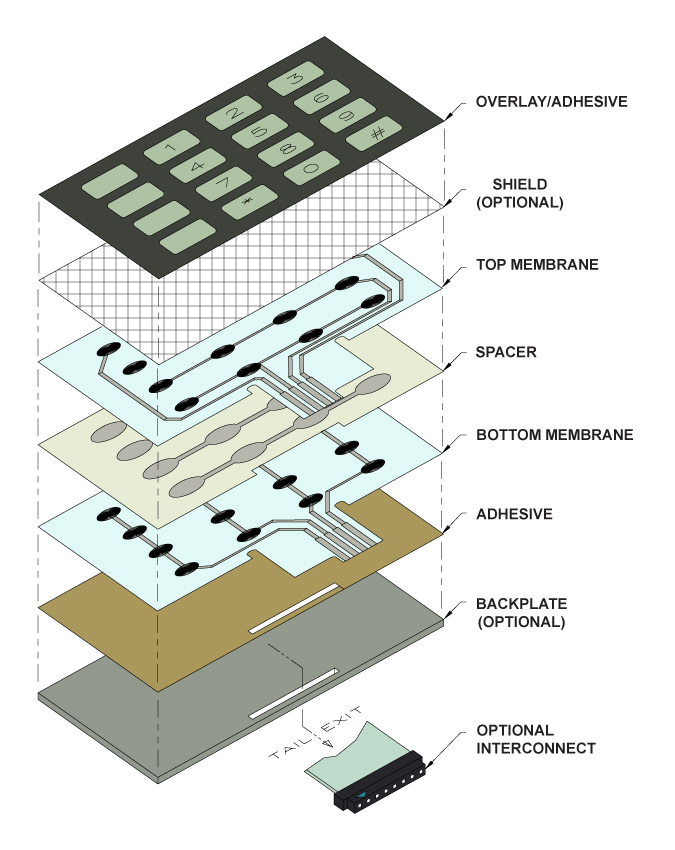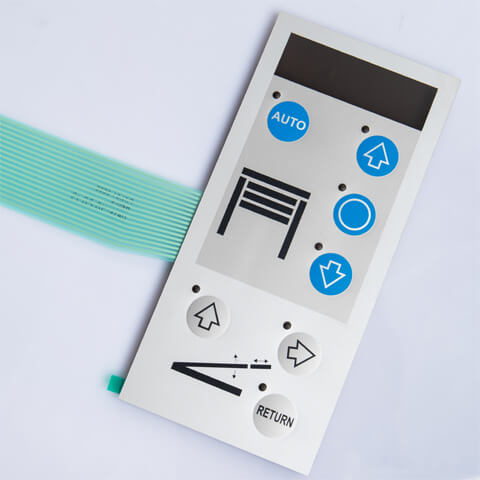Exploring the Manufacturing Process of Custom Membrane Switches
Exploring the Manufacturing Process of Custom Membrane Switches
Blog Article
Why Membrane Layer Changes Are Vital for Resilient Control Solution
Membrane layer switches play a critical role in ensuring the resilience and reliability of control systems throughout different markets. Their unique construction permits them to sustain difficult environmental factors such as moisture, temperature extremes, and physical wear. This resilience not only expands the life expectancy of the systems they serve but additionally lessens upkeep needs. As we explore the diverse advantages of membrane layer switches, it becomes noticeable that their relevance goes beyond plain functionality, affecting user experience and functional effectiveness. What more ramifications do these qualities hold for the future of control system layout?
Review of Membrane Buttons
Membrane layer switches are functional and reputable components typically used in various digital control systems. These buttons are composed of numerous layers, consisting of a graphic overlay, a spacer layer, and a published circuit layer. The graphic overlay gives both functional and aesthetic layout, while the spacer layer makes sure that the buttons are triggered only when pressed. The printed circuit layer consists of conductive traces that finish an electric circuit when the membrane layer is pressed, allowing the gadget to react to individual inputs.
Membrane switches are commonly favored in applications requiring a compact and light-weight layout, making them excellent for portable tools, clinical devices, and industrial equipment. They can be tailored to meet particular user requirements and can include various features such as backlighting, responsive responses, and several colors. Membrane layer switches are immune to dust, moisture, and impurities, making them appropriate for atmospheres where resilience is essential.
Benefits of Sturdiness
In many applications, the longevity of membrane switches deals significant benefits that improve their overall efficiency and dependability. These switches are created to withstand rough environments, making them ideal for use sought after problems such as high humidity, severe temperature levels, and direct exposure to chemicals. Their robust construction helps to protect against damage from physical effect, guaranteeing lasting capability and reducing the need for frequent replacements.
Additionally, membrane layer buttons are immune to put on and tear, which is critical in applications where frequent interaction occurs. This toughness converts to lower upkeep prices, as organizations take advantage of lowered downtime and less service interruptions. The encapsulated style of membrane layer changes secures inner components from dust and wetness access, more adding to their lifespan (membrane switch).
An additional advantage is their capacity to maintain consistent performance in time. With a high tolerance for mechanical anxiety, these buttons protect their tactile comments and electric stability, making certain customer complete satisfaction. Eventually, the durability of membrane layer switches over not just boosts functional effectiveness however likewise promotes confidence in their dependability, making them a favored option for control systems throughout numerous fields.
Applications in Different Industries
Long lasting control systems using membrane layer switches find comprehensive applications across a variety of industries, each benefiting from the one-of-a-kind features these buttons provide. In the medical field, membrane layer switches are crucial for devices such as person monitors and analysis devices, where reliability and convenience of cleansing are critical. visit site Their resistance to moisture and impurities ensures they maintain capability in sterilized environments.
The auto industry leverages membrane buttons for control panel controls and infotainment systems, where they provide streamlined, low-profile user interfaces that improve user experience. These buttons are also made to endure harsh problems, including direct exposure to extreme temperature levels and vibrations.
In commercial settings, membrane layer switches are commonly utilized in equipment control panels, providing responsive feedback and longevity required for high-usage applications. Their capacity to resist chemicals makes them ideal for manufacturing atmospheres where spills and impurities are frequent.

Consumer electronic devices, such as kitchen area appliances and push-button controls, additionally make use of membrane switches for their adaptability and cost-effectiveness. In general, the versatility and durable nature of membrane layer switches make them important throughout numerous markets, making sure effective procedure and long life in control systems.
Design and Aesthetic Appeal
While performance is vital, the layout and visual allure of control systems outfitted with membrane layer buttons play an important function in individual interaction and general experience (membrane switch). The aesthetic style of these switches can substantially affect individual assumption and communication. A properly designed membrane layer button enhances the attractiveness of the gadget, making it a lot more enticing to customers and cultivating a connection explanation between the user and the product
Membrane switches offer a lot of adaptability in layout, enabling manufacturers to tailor graphics, colors, and appearances to line up with brand identification and item looks. Using lively colors and distinct patterns can attract interest, while responsive comments can strengthen the individual's interaction with the gadget. Additionally, the ability to integrate LED indications and backlighting into the membrane layer switch layout supplies both functional and visual advantages, enhancing presence and functionality in various environments.

Enhancing User Experience

Moreover, membrane switches can be customized to incorporate graphical interfaces, boosting use by offering details in a clear and instinctive fashion (membrane switch). This customization can consist of symbols, tags, and shade coding that overview individuals with complicated capabilities effortlessly. Additionally, their flexibility enables combination in different atmospheres, guaranteeing constant performance whether in industrial equipment or customer electronics
The toughness of top article membrane layer switches also plays a vital role in customer experience. By standing up to harsh conditions and extended usage, these buttons minimize the probability of system failures, thus advertising dependability and individual confidence. Inevitably, the critical usage of membrane layer switches not just raises functionality yet additionally substantially enriches customer interaction with control systems, making them a vital element in modern-day style.
Conclusion

Report this page